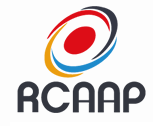Perfis genéticos de Mycobacterium bovis em um rebanho bovino no extremo sul do Brasil
DOI:
https://doi.org/10.5433/1679-0359.2016v37n5Supl2p3719Palavras-chave:
Diversidade genética, Tuberculose bovina, MIRU-VNTR, Mycobacterium bovis.Resumo
Mycobacterium bovis é o agente da tuberculose bovina, enfermidade endêmica diagnosticada em todos os estados brasileiros. As técnicas de tipagem molecular auxiliam a estratificar e refinar dados, fornecendo informações que facilitam as atividades epidemiológicas. Neste estudo aplicou-se a técnica MIRU-VNTR com 24 loci para caracterizar e identificar os agrupamentos genéticos de isolados de M. bovis oriundos de um foco de tuberculose bovina. Dezoito isolados de bacilos álcool-ácido resistentes, obtidos de amostras de tecido de bovinos reagentes ao teste cervical comparativo e identificados como espécies do complexo M. tuberculosis, foram genotipados por meio de MIRU-VNTR com 24 pares de iniciadores. A genotipagem revelou três perfis genéticos distintos: um para 15 isolados (83,3%); um para dois isolados (11,1%) e, por fim, um isolado com perfil único (5,6%). Os iniciadores responsáveis por essa distinção foram MIRU 31, que agrupou dois isolados em um perfil, e ETR A, B e C, que discriminaram o isolado de perfil único. A ocorrência de agrupamentos de isolados é indicativa de transmissão recente, ao passo que isolados de perfil único sugerem reativação de infecção latente. A presença de diferentes genótipos de M. bovis no mesmo rebanho sugere haver circulação de animais doentes ou existirem diferentes fontes de infecção intrarrebanho. A aplicação da técnica de epidemiologia molecular MIRU-VNTR a isolados de M. bovis obtidos a partir de um foco de tuberculose bovina no Rio Grande do Sul demonstrou haver diversidade genética entre as estirpes em circulação, embora exista um agrupamento predominante.Downloads
Downloads
Publicado
Como Citar
Edição
Seção
Licença
Copyright (c) 2016 Semina: Ciências Agrárias

Este trabalho está licenciado sob uma licença Creative Commons Attribution-NonCommercial 4.0 International License.
Semina: Ciências Agrárias adota para suas publicações a licença CC-BY-NC, sendo os direitos autorais do autor, em casos de republicação recomendamos aos autores a indicação de primeira publicação nesta revista.
Esta licença permite copiar e redistribuir o material em qualquer meio ou formato, remixar, transformar e desenvolver o material, desde que não seja para fins comerciais. E deve-se atribuir o devido crédito ao criador.
As opiniões emitidas pelos autores dos artigos são de sua exclusiva responsabilidade.
A revista se reserva o direito de efetuar, nos originais, alterações de ordem normativa, ortográfica e gramatical, com vistas a manter o padrão culto da língua e a credibilidade do veículo. Respeitará, no entanto, o estilo de escrever dos autores. Alterações, correções ou sugestões de ordem conceitual serão encaminhadas aos autores, quando necessário.













